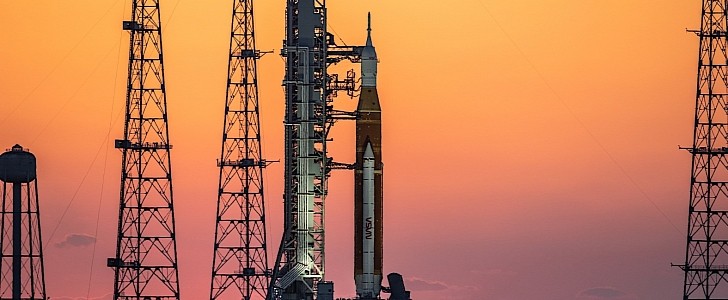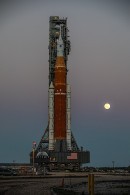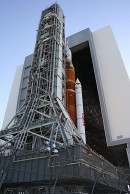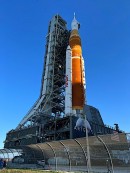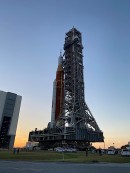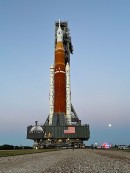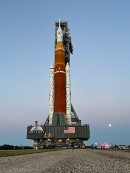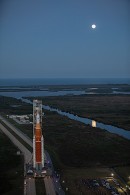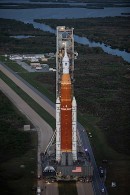At the end of last week, NASA rolled out the Space Launch System (SLS) rocket and the Orion capsule. It was the combo’s first public outing in complete form and meant moving the rocket from the Vehicle Assembly Building (VAB) to Launch Complex 39B for something called wet dress rehearsal test.
The SLS as we now see it on the pad will launch at a yet to be determined date toward the Moon, in the first mission of the Artemis program. No crew will be on board, but the mission is crucial for the validation of the SLS’ components in light of upcoming crewed flights.
Before it gets to make history by flying to the Moon, though, some checkups still need to be conducted, especially ones pertaining to the actual launch steps and procedures. Those are generally called wet dress rehearsal test, which basically means simulating almost the entire steps of a launch, without the actual ignition.
First, one of the most important aspects of the test is the loading of the SLS tanks with fuel (hence the “wet” in the name). In this case, more than 700,000 gallons of cryogenic fuel (liquid hydrogen and liquid oxygen) will be loaded into the rocket.
Once that is done, NASA engineers will simulate a countdown to launch, halting it at about 10 seconds prior to ignition. Finally, the last component of the test will require the draining of the fuel.
The entire procedure is expected to last about two days, and NASA intends on starting it on April 1. Preparations for it are moving fast, with the rocket already connected to electrical, fuel environmental control system ducts, and cryogenic propellant lines. Also, the rocket has already been powered up and is awaiting the crucial moment.
The test is extremely important, as it is now when engineers will discover any faults in design or procedures. Once it has concluded, NASA will move the SLS back into the VAB for final checkouts before the actual launch of the first Artemis mission.
Before it gets to make history by flying to the Moon, though, some checkups still need to be conducted, especially ones pertaining to the actual launch steps and procedures. Those are generally called wet dress rehearsal test, which basically means simulating almost the entire steps of a launch, without the actual ignition.
First, one of the most important aspects of the test is the loading of the SLS tanks with fuel (hence the “wet” in the name). In this case, more than 700,000 gallons of cryogenic fuel (liquid hydrogen and liquid oxygen) will be loaded into the rocket.
Once that is done, NASA engineers will simulate a countdown to launch, halting it at about 10 seconds prior to ignition. Finally, the last component of the test will require the draining of the fuel.
The entire procedure is expected to last about two days, and NASA intends on starting it on April 1. Preparations for it are moving fast, with the rocket already connected to electrical, fuel environmental control system ducts, and cryogenic propellant lines. Also, the rocket has already been powered up and is awaiting the crucial moment.
The test is extremely important, as it is now when engineers will discover any faults in design or procedures. Once it has concluded, NASA will move the SLS back into the VAB for final checkouts before the actual launch of the first Artemis mission.
